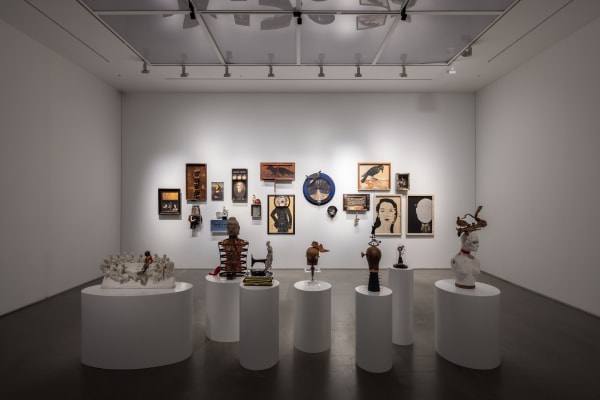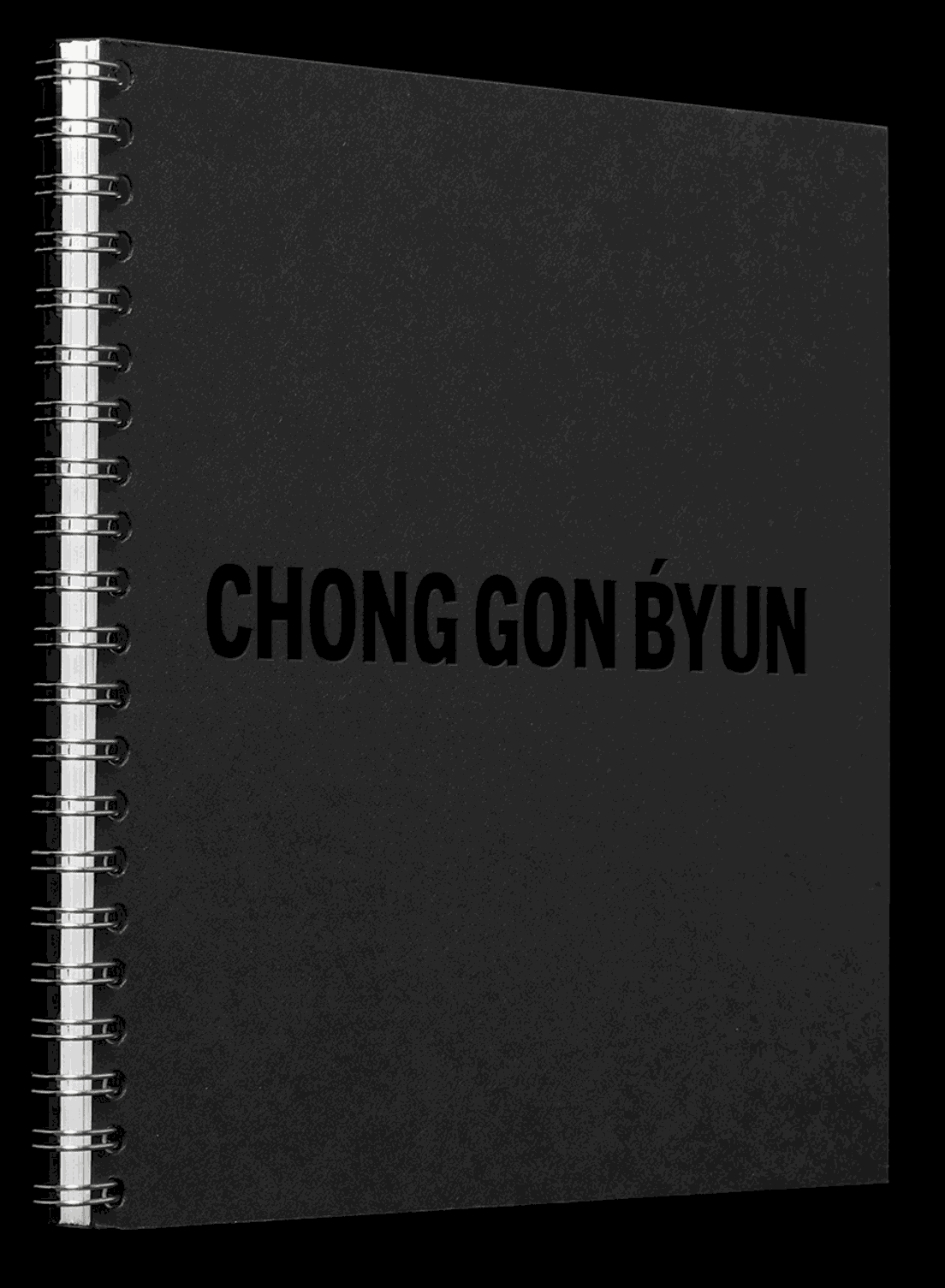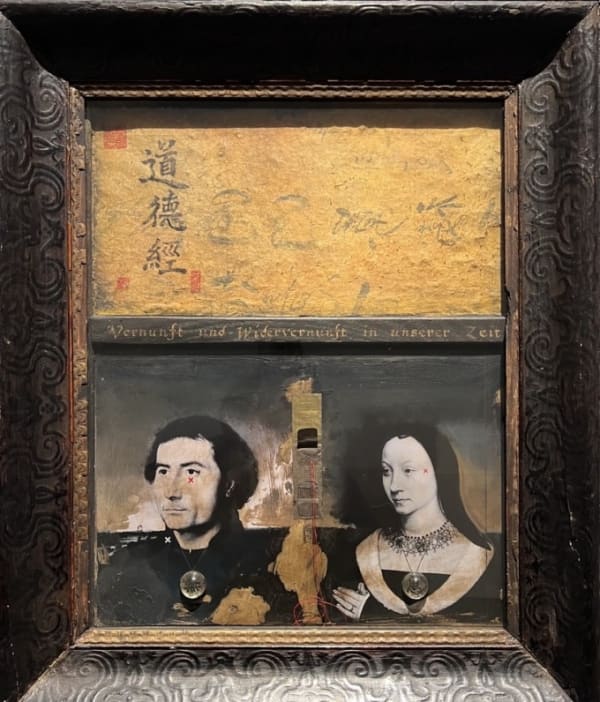Byun Chong Gon Korean, b. 1948
Overview
Born in Daegu in 1948, Byun Chong Gon has waged a battle at the crossroads of freedom and oppression. As a figure at the forefront of Hyperrealism, he was awarded the grand prize at the first Dong-a Ilbo Art Exhibition in 1978. In a turn of events, he was later branded as a dissident for his portrayal of an evacuated American airfield during the Yushin order (Fourth Republic). Moving to America to escape political oppression and excessive surveillance, he struggled with poverty, but his newfound cultural life left him feeling intellectually fulfilled. Though his life in America was difficult to the point that he was “carrying death around in [his] pocket,” enjoying creative liberty that would have been unheard of in Korea allowed him to cultivate his artistic practice.
Not long into his time in America, Byun Chong Gon discovered a striking resemblance between himself and objects thrown away on the streets. He began collecting these discarded objects, one at a time, and taking them apart. He felt a certain warmth from these objects that had been so callously thrown away and recognized his own loneliness. He wanted to express the irony of a world where people who abandoned these objects later played a role in the creation and to depict the ills and problems that come with living in it.
Byun Chong Gon adopted a new artistic style— a new technique called assemblage that was in line with the American interest in forms that departed from established artistic trends of the late 20th century, like Pop art or abstract art. His work fuses the novelty of his combination of two distinct objets with the greatest tool in his artistic arsenal, hyperrealism. Attempting to reinterpret the values, norms, and orders upheld by members of modern society, his method of communicating this message to the public more closely resembles a clear linguistic form that transcends the ambiguity of modern art.
After years of being deprived of freedom, Byun Chong Gon's new beginning provided an outlet for his distinctive mode of creative expression that was considered radical and groundbreaking by the American art world. By making great strides in the U.S., he significantly attracted interest in Asian cultures that were still largely unfamiliar in America. Not bound by any particular ideology, his works embodied freedom. Displayed many of his objets on the American stage consistently, he proudly received a warm welcome home alongside Nam June Paik at the 1988 Summer Olympics hosted in Korea. His works were later retroactively celebrated and appreciated within Korea and displayed in exhibitions at renowned museums, including the Gwangju Museum of Art, and Pohang Museum of Steel Art, among others.
1948년 대구에서 태어난 변종곤은 자유와 억압의 중간 기로에서 끊임없는 투쟁을 함께했다. 극사실주의 미술의 선봉 역할을 하던 그는 1978년 제 1회 동아일보 미술대전 대상을 수상하지만, 유신 시절 철수된 미군 공항의 모습을 그렸다는 이유로 반체제 인사로 낙인 찍혔다. 정치적 탄압과 지나친 감시로 도망치듯 미국 땅을 밟은 그는 가난했지만 새로운 문화적 삶에 정신적 포만감을 느꼈다. “호주머니에 죽음을 넣고 다녔다”고 할 정도로 힘겨운 미국 생활이었지만 한국에서는 맛볼 수 없었던 창작의 자유를 만끽하며 자신의 예술세계를 키워나갔다.
미국 생활을 시작하고 얼마 지나지 않아 그는 길에 버려진 물건들을 하나 둘씩 가져오고 분해하기 시작했다. 차갑게 내동댕이쳐진 물건에서 그는 모종의 온기를 느꼈고, 동시에 자신과 꼭 닮은 외로움을 느꼈다고 한다. 물건을 버린 사람들이 결국 그 물건을 만들어 내고 있는 아이러니한 세상과 그 병폐와 문제점을 표현하고자 했다.
20세기 후반 팝 아트 혹은 추상미술과 같이 기존의 미술 사조와는 다른 형식이 추구되던 미국 미술계에서 변종곤은 “아상블라쥬”라는 색다른 기법을 채택했다. 이질적인 두 가지의 오브제가 결합된 것 위에 변종곤의 가장 큰 무기인 극사실주의 기법을 접목시킨 것이다. 그의 작업은 현대인들의 가치관, 규범 그리고 질서에 재해석을 시도하며, 그 의미의 전달 방식은 현대미술에 느껴지는 애매함 보다는 또렷한 언어적인 느낌을 가졌다.
그의 작품은 미국 내 미술 관계자 및 평론가들에게 신선한 충격을 안겨다 주었다. 미국에서의 활동은 많은 이들의 주목을 받았으며, 친숙하지 못한 동양권의 문화를 전파하는 큰 역할을 했다. 그의 작품들은 어떠한 특정 사조에 얽매여 있지 않고 자유로웠다. 계속해서 변종곤은 미국을 주 무대로 자신의 오브제들을 널리 소개했고, 1988년 한국에서 개최된 올림픽에 맞춰 故백남준 작가와 함께 당당히 금의환향을 한다. 그 후, 변종곤의 작품들이 한국 내에서 회고되었고 꾸준한 사랑을 받고 있다. 그는 광주와 포항 시립미술관 등 유수 미술관에서 전시를 가지며 활발히 활동하고 있다.
Exhibitions
-

Byun Chong Gon
22 Dec 2023 - 3 Feb 2024The Page Gallery is pleased to present the solo exhibition of Byun Chong Gon (b.1948), consisting of 24 artworks produced from 1997 to 2013, on view from 22 December to...Read more -

NO MORE ART
3 Jul - 28 Sep 2014NO MORE ART 3 JULY – 28 SEPTEMBER 2014 No More Art is an exhibition project integrating the viewing of global contemporary art with experiencing the Korean modern art period...Read more
Publications
News
-

A Korean Gallery Seeks to Expand Its Reach
The New York Times February 29, 2024By David Belcher Reporting from Seoul Feb. 29, 2024 In the Seongdong neighborhood of hipster bars and pedestrian streets crowded with the well heeled, the...Read more -

뉴욕작가 변종곤의 '유머와 반전'의 오브제아트, 사실은 '줍줍 아이템'?
newspim December 29, 2023이영란 편집위원=뉴욕에서 활동하는 변종곤의 작품에는 유머와 반전이 내포돼 있다. 40년 넘게 미국 뉴욕을 무대로 작업 중인 변종곤(b.1948)이 서울 성수동 더페이지갤러리(대표 성지은) 초대로 22일 개인전을 개막했다....Read more -

'오브제 해학' 대가 변종곤, 더페이지갤러리서 개인전
NEWSIS December 28, 2023[서울=뉴시스] 박현주 미술전문 기자 = '오브제 해학'의 극치를 보여주는 변종곤(75)개인전이 서울 성수동 더페이지갤러리에서 열리고 있다. 이번 전시에는 1997년부터 2013년도 사이에 제작된 24점을 선보인다. 지난 40년이...Read more -

뉴욕 길거리에서 주운 물건이 작품으로… 변종곤 개인전
ART CHOSUN December 27, 2023작가 변종곤의 개인전이 2월 3일까지 성수동 더페이지갤러리 WEST관에서 열린다. 한국의 시대상을 반영한 극사실주의 회화로 주목받던 변종곤은 전업 작가 생활을 꿈꾸며 1981년에 미국 뉴욕으로 이주했다....Read more -

더페이지갤러리, 변종곤 개인전 개최, 한국과 미국, 두 나라의 역사와 정치적 혼돈을 작가 특유의 유머로 담아낸 작품 24점 전시
에포크한남 December 26, 2023더페이지갤러리는 변종(b.1948) 작가의 개인전을 오는 12월 22일부터 2024년 2월 3일까지 개최한다. 이번 개인전은 1997년 부터 2013년도 사이에 제작된 작품 24점으로 구성되었다. 1978년 제1회 동아일보 미술대전...Read more -

생선 가게에서 작품을 걸었더니…
heyPOP December 22, 2021뉴욕타임스 1면에 실려버렸다? 변종곤은 1978년, 제1회 동아미술대전 대상을 수상하며 화려하게 데뷔했다. 세간의 스포트라이트를 받은 것은 그때였지만, 실상 그는 현대미술 최전선에서 활동했던 미술 운동 단체 ‘에꼴...Read more -

삶이 예술이고 작업실이 작품이다, 영화 같은 삶과 예술, 화가 변종곤
BRAVO My Life August 1, 2016‘영화 같은 삶’이란 말이 가장 어울리는 예술인, 변종곤(67세). 극사실화의 대가인 변종곤은 사물(오브제)을 활용한 아상블라주와 조각의 영역을 넘나들며 독보적인 예술 세계를 구축했다. 그를 만난 브루클린 코블...Read more -
예술가들은 부조리하고, 불편한 것을 표현하는 사람
NYCultureBeat August 17, 20131970년대 중반, 대구의 가톨릭고교 미술교사였던 그는 단발머리 차림으로 거리를 활보하다가 장발 단속반에 수 차례 잡혀갔다. 1978년, 그는 철수한 미군 비행 장을 크사실주의로 그려 한국 최초의...Read more -

현대미술의 중심지, 뉴욕에 뿌리내린 한국 작가
Topclass March 2, 2007“26년 되었지만 뉴욕은 여전히 나를 흥분시켜요.” 세계 현대미술의 중심지 뉴욕의 신선한 자극과 활기가 작가 변종곤의 말에서 배어 나온다. 처음 이곳에 와서 숨쉰 자유의 느낌을 그는...Read more











